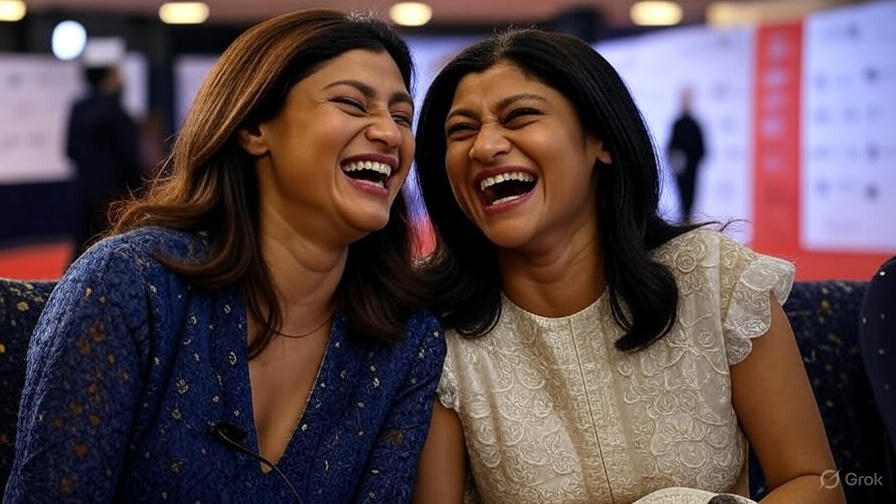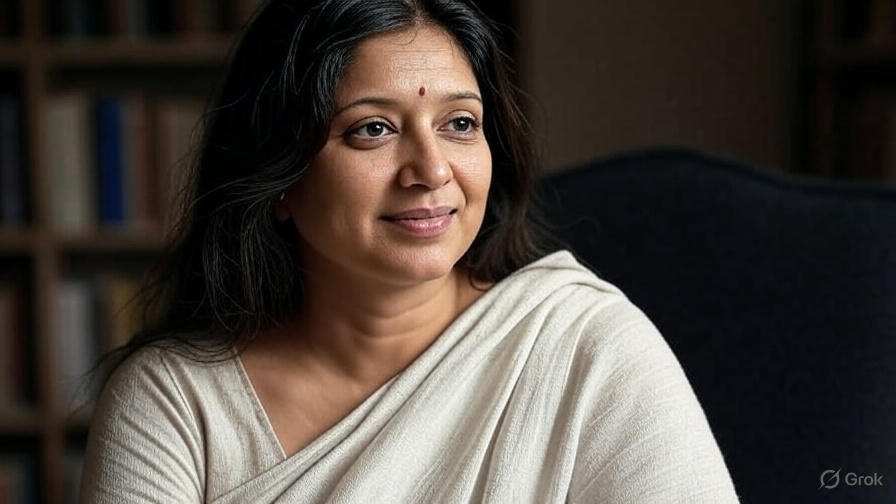Aparna Sen: The Cinematic Muse Who Inspired Kamal Haasan to Embrace Bengali
In a revelation that highlights the profound respect one cinematic legend holds for another, veteran actor Kamal Haasan has begun learning the Bengali language, inspired solely by the immense body of work and intellectual depth of the legendary filmmaker and actress, Aparna Sen. This fascinating detail was recently shared by his daughter, the multi-talented Shruti Haasan, offering a glimpse into the endless curiosity that defines her father. This act isn’t merely about picking up a new dialect; it’s a testament to the powerful cultural and artistic influence of Aparna Sen, a woman who has been a pivotal force in Indian parallel cinema for over six decades. Her work is not just watched; it is studied, absorbed, and revered.
This story is more than a trivia about a superstar learning a new language. It is a gateway into understanding the legacy of Aparna Sen—a director, screenwriter, and actress whose narratives have consistently challenged societal norms, given voice to the marginalized, and painted intricate portraits of human relationships with unparalleled sensitivity and intelligence.
Who is Aparna Sen? The Prodigy Who Began at Sixteen
To call Aparna Sen just a filmmaker would be a disservice. She is an institution unto herself. Her journey in the world of arts began at a remarkably young age. Born on 25 October 1945 into a culturally rich family in Kolkata (her father, Chidananda Dasgupta, was a renowned film critic and scholar), cinema was the very air she breathed.
Her talent was identified early. At just sixteen, she made her acting debut in the acclaimed Satyajit Ray film, Teen Kanya (1961). Ray, a stickler for perfection, saw in the young Aparna Sen a rare maturity and depth of expression. This association with the maestro of Indian cinema set the stage for a career that would itself become legendary. She went on to act in numerous Bengali films throughout the 1960s and 70s, establishing herself as a leading actress with both critical and commercial appeal.
But Aparna Sen was destined for more than just acting. Her intellectual curiosity and a burning desire to tell her own stories propelled her behind the camera.
The Director Emerges: A Voice for the Modern Indian Woman
In 1981, Aparna Sen made her directorial debut with 36 Chowringhee Lane. The film was nothing short of a revelation. Starring Jennifer Kendal as an elderly Anglo-Indian schoolteacher living a life of lonely solitude in post-colonial Kolkata, the film was a masterclass in subtlety and empathy.
- Critical Acclaim: The film won the Grand Prix at the Manila International Film Festival and was acclaimed worldwide for its poignant narrative and delicate handling of themes like loneliness, nostalgia, and the changing social fabric of India.
- A New Perspective: For perhaps the first time, a mainstream Indian filmmaker was telling a story from the perspective of a character on the fringes of society, with a sensitivity that was uniquely feminine. This established a signature style for Aparna Sen—one that was introspective, character-driven, and fearless.
Her subsequent films solidified her reputation as a filmmaker of extraordinary caliber:
- Paroma (1984): A bold and controversial film for its time, it explored the sexual and emotional awakening of a middle-aged, middle-class Bengali housewife. It was a radical critique of patriarchal norms and is studied today as a seminal text of feminist cinema in India.
- Sati (1989): Based on a short story by Prabhat Kumar Mukhopadhyay, this film was a powerful indictment of the archaic practice of Sati and the blind superstitions that plague society.
- Mr. and Mrs. Iyer (2002): This National Award-winning film was a profound commentary on communalism in India. Set against the backdrop of religious riots, it tells the story of a Hindu woman who protects a Muslim man by claiming he is her husband. The film, starring Konkona Sen Sharma (her daughter) and Rahul Bose, won immense praise for its humanistic approach to a deeply divisive issue.
- The Japanese Wife (2010): A whimsical, unconventional tale of a cross-cultural romance conducted entirely through letters, showcasing her range as a storyteller who could navigate between hard-hitting realism and magical realism with ease.
The Kamal Haasan Connection: A Scholar’s Respect
This brings us back to the inspiring incident that sparked this article. Why would a titan of Tamil and Indian cinema like Kamal Haasan be moved to learn a new language because of Aparna Sen?
The answer lies in the substance of her work. Kamal Haasan is himself known as a voracious reader, a polymath, and a filmmaker who constantly pushes boundaries. He doesn’t merely consume art; he engages with it, dissects it, and learns from it. The films of Aparna Sen are dense with literary quality, nuanced dialogues, and deep philosophical undertones. To truly appreciate the layers of her screenwriting and the cultural context embedded within her stories, a understanding of the Bengali language is invaluable.
By learning Bengali, Kamal Haasan is essentially going back to the primary source. He is choosing to experience her narratives—and by extension, the rich literary tradition of Bengal that influences her—in its most authentic form. This is the highest compliment one artist can pay to another. It is the act of a scholar, acknowledging that the translation, however good, might lose a fraction of the original’s soul. Shruti Haasan’s revelation paints a picture of an ever-curious artist, and Aparna Sen is the muse fueling that curiosity.
Aparna Sen’s Lasting Impact on Indian Cinema
The influence of Aparna Sen extends far beyond her own filmography. She has paved the way for a generation of filmmakers, especially women, who seek to tell stories that are personal, political, and profound.
- Feminist Narrative: She redefined the portrayal of women on the Indian screen. Her female characters are complex, desiring, flawed, and fiercely real. They are not props to further a male protagonist’s journey but are the journey themselves.
- Blending Art with Mainstream: She successfully demonstrated that films with strong, serious content could find their audience and achieve critical success without compromising their artistic integrity.
- A Family of Artists: The legacy continues with her daughter, Konkona Sen Sharma, who is one of the most acclaimed actresses and now a director in her own right, carrying forward the tradition of thoughtful cinema. Konkona’s directorial debut A Death in the Gunj (2016) bears the unmistakable influence of her mother’s keen eye for human psychology and layered storytelling.

Beyond Direction: The Actor and The Intellectual
While her directorial achievements are colossal, one must not forget her contributions as an actress. Even while directing, she occasionally returned to acting in powerful roles, notably in films like Goynar Baksho (2013) and the recent web series The Rapist (2021), which she also directed, once again holding a mirror to society’s darkest aspects.
Aparna Sen is also a prominent public intellectual. She has been associated with the editorial board of the celebrated Bengali magazine Sananda and has never shied away from voicing her reasoned opinions on social and political matters, cementing her role as a conscientious citizen of the world.
An Evergreen Inspiration
The anecdote about Kamal Haasan is a perfect metaphor for the enduring power of Aparna Sen‘s art. It inspires, educates, and challenges. It makes one want to dig deeper, to understand more, to become a better student of life and cinema. At 78, she remains as vibrant and relevant as ever, a true icon whose work transcends regional and linguistic barriers.
Her films are not just to be watched but to be experienced—a heartfelt recommendation for anyone who believes in the power of cinema to not just entertain, but to enlighten and transform. Kamal Haasan’s new pursuit is a lesson for all of us: sometimes, to truly hear a profound voice, you must learn to listen in its original language.





